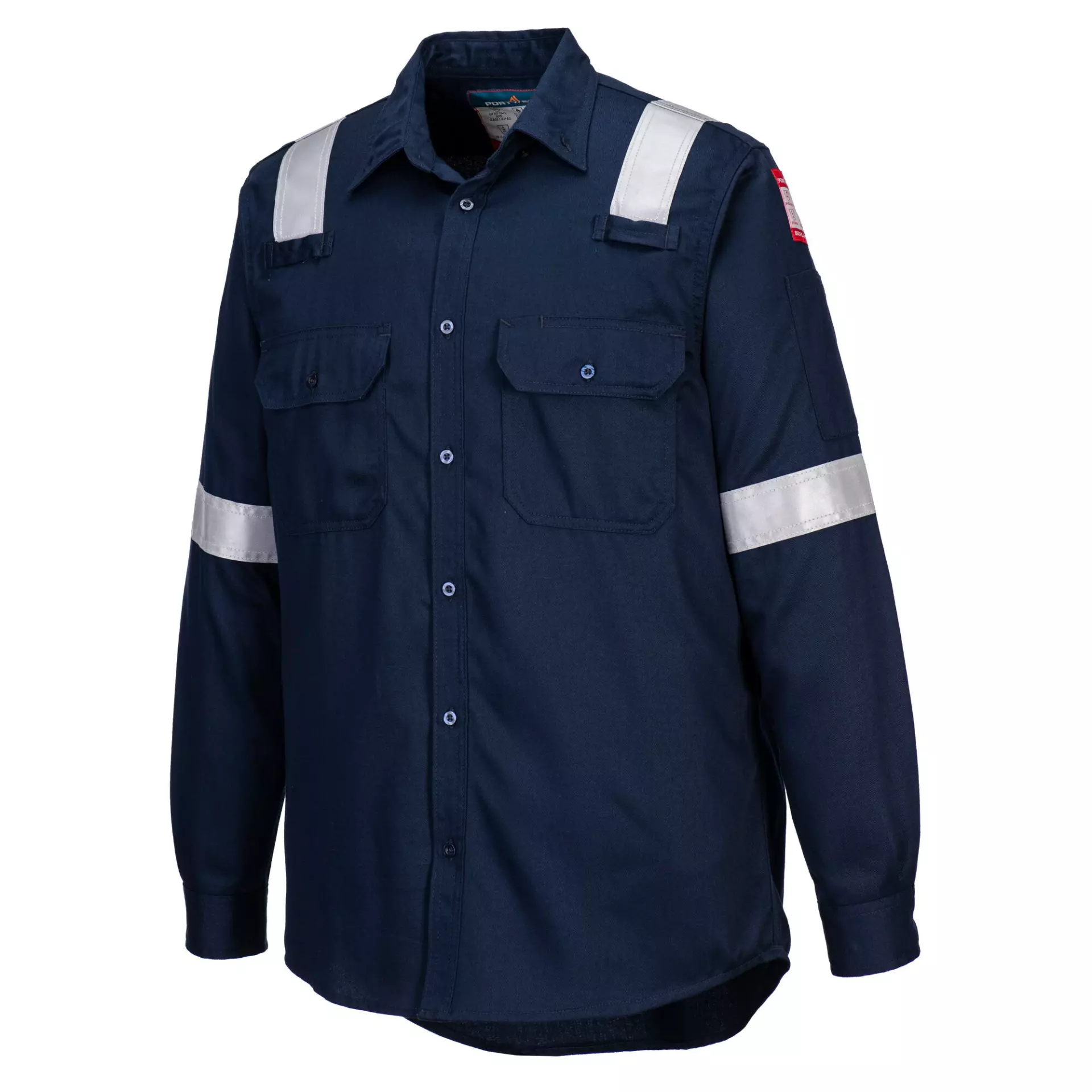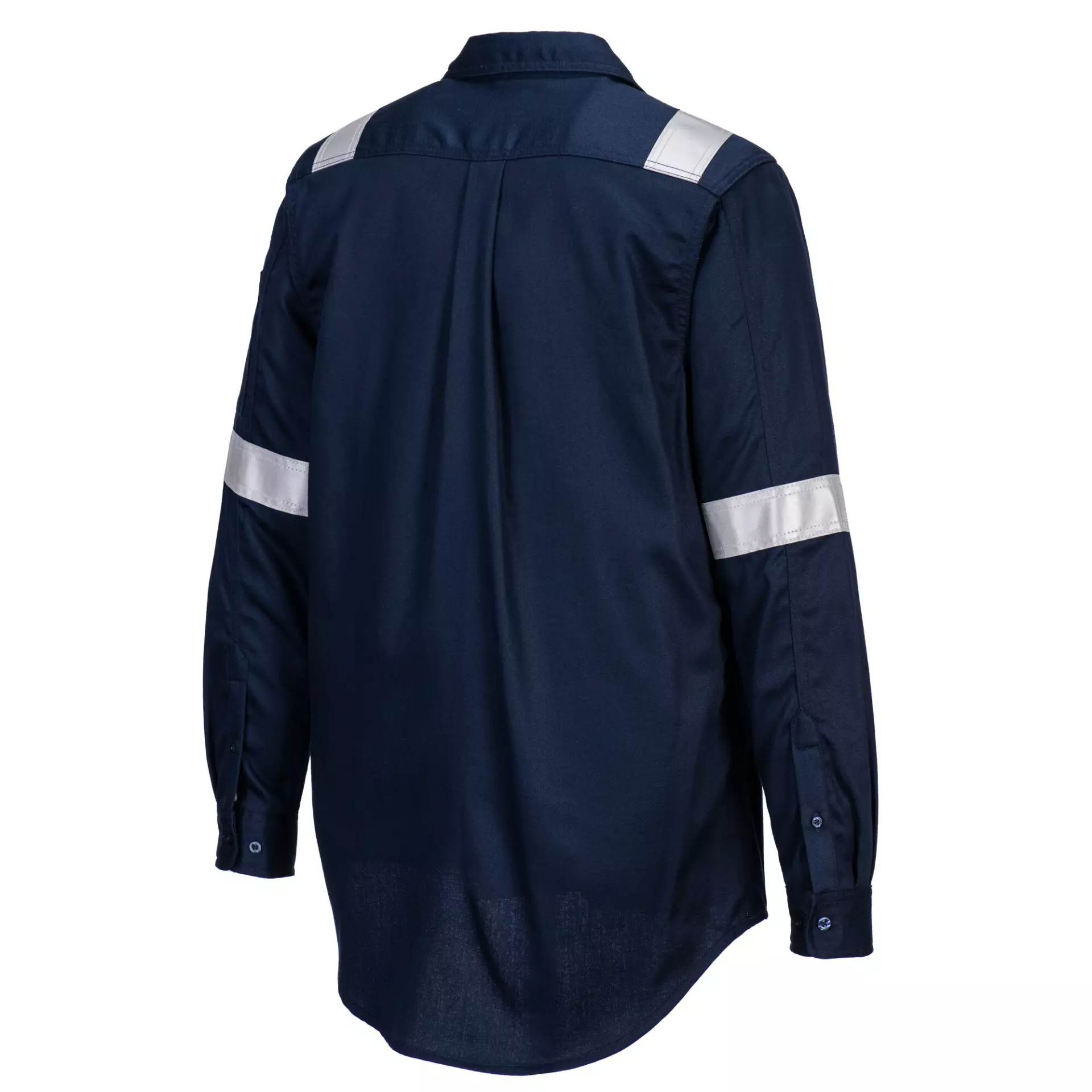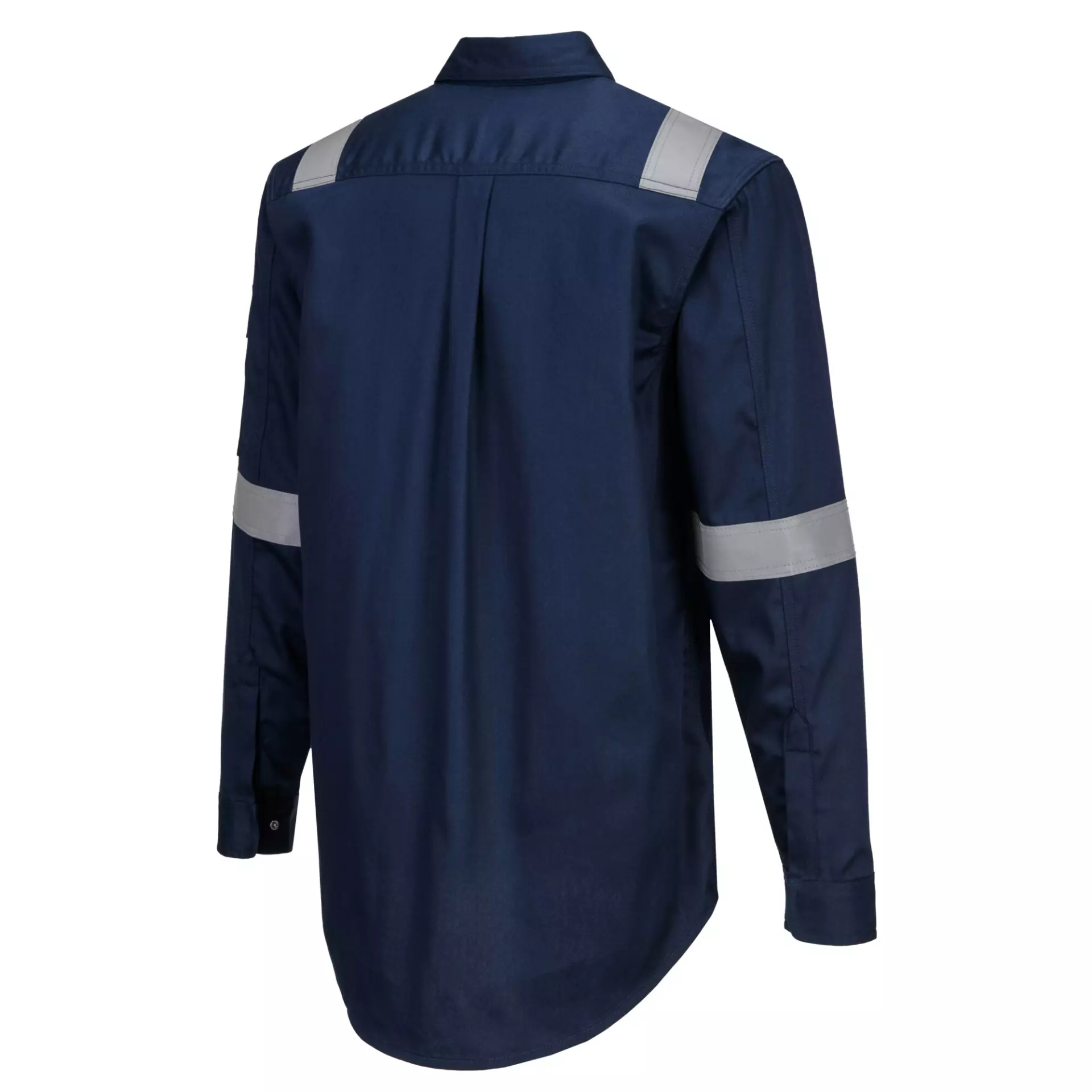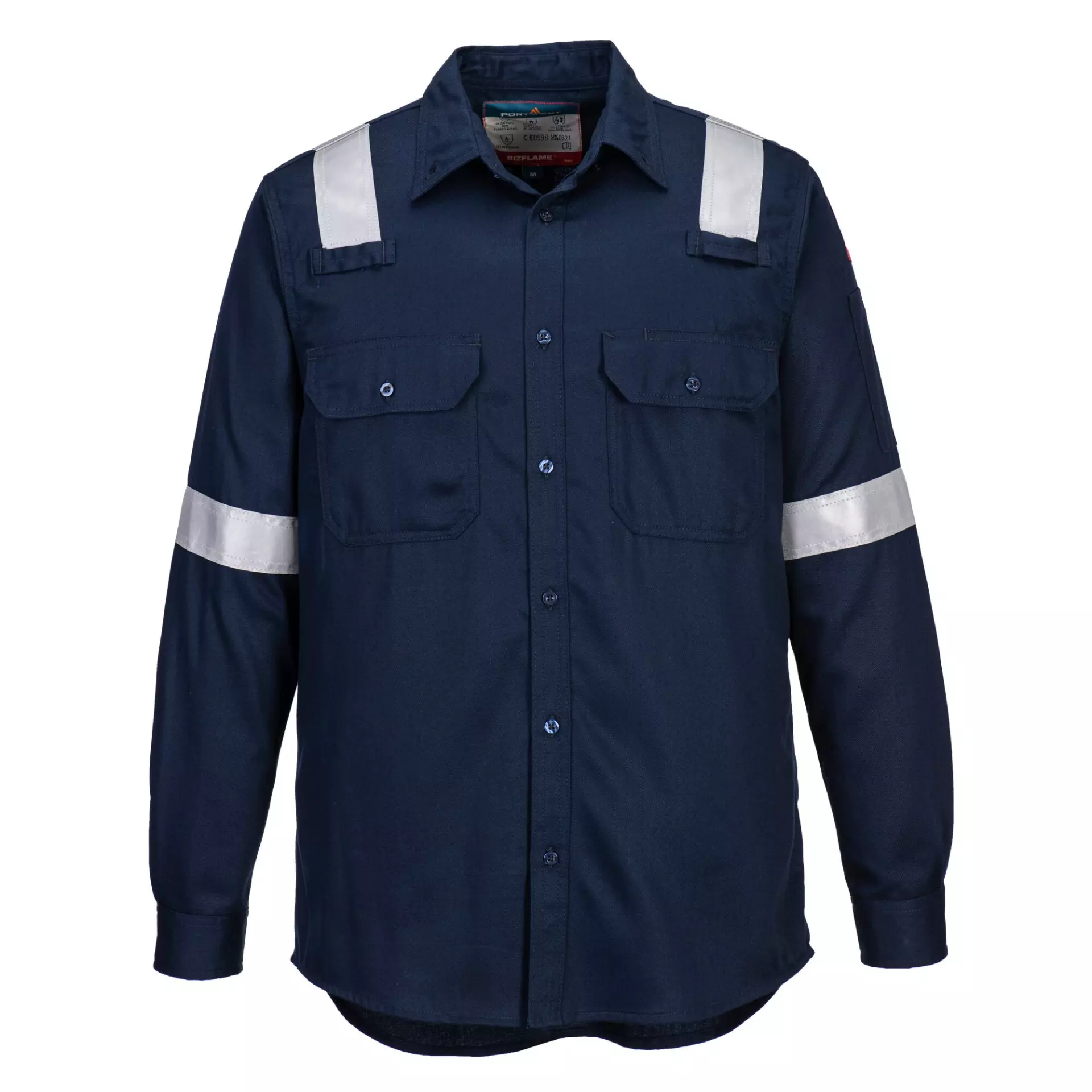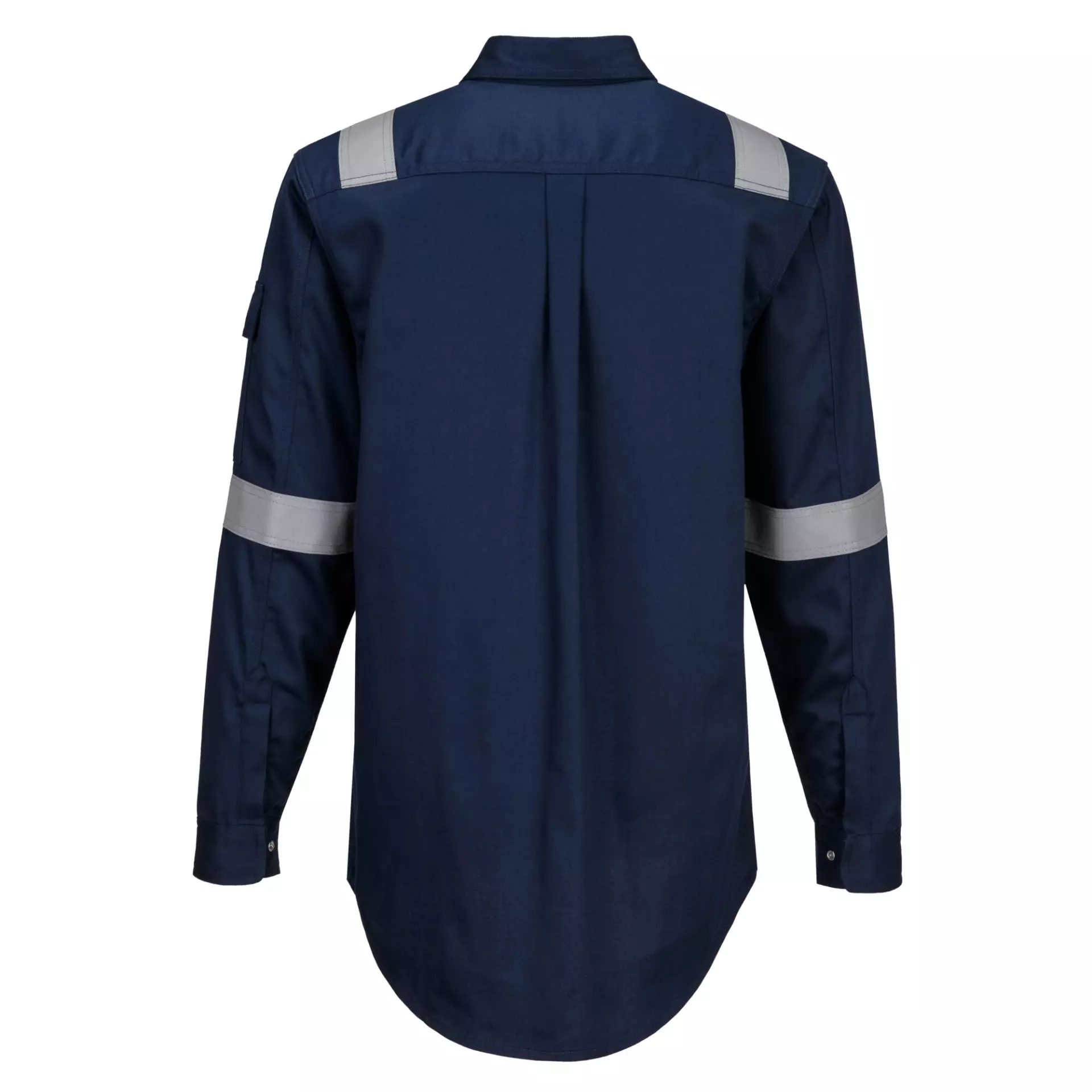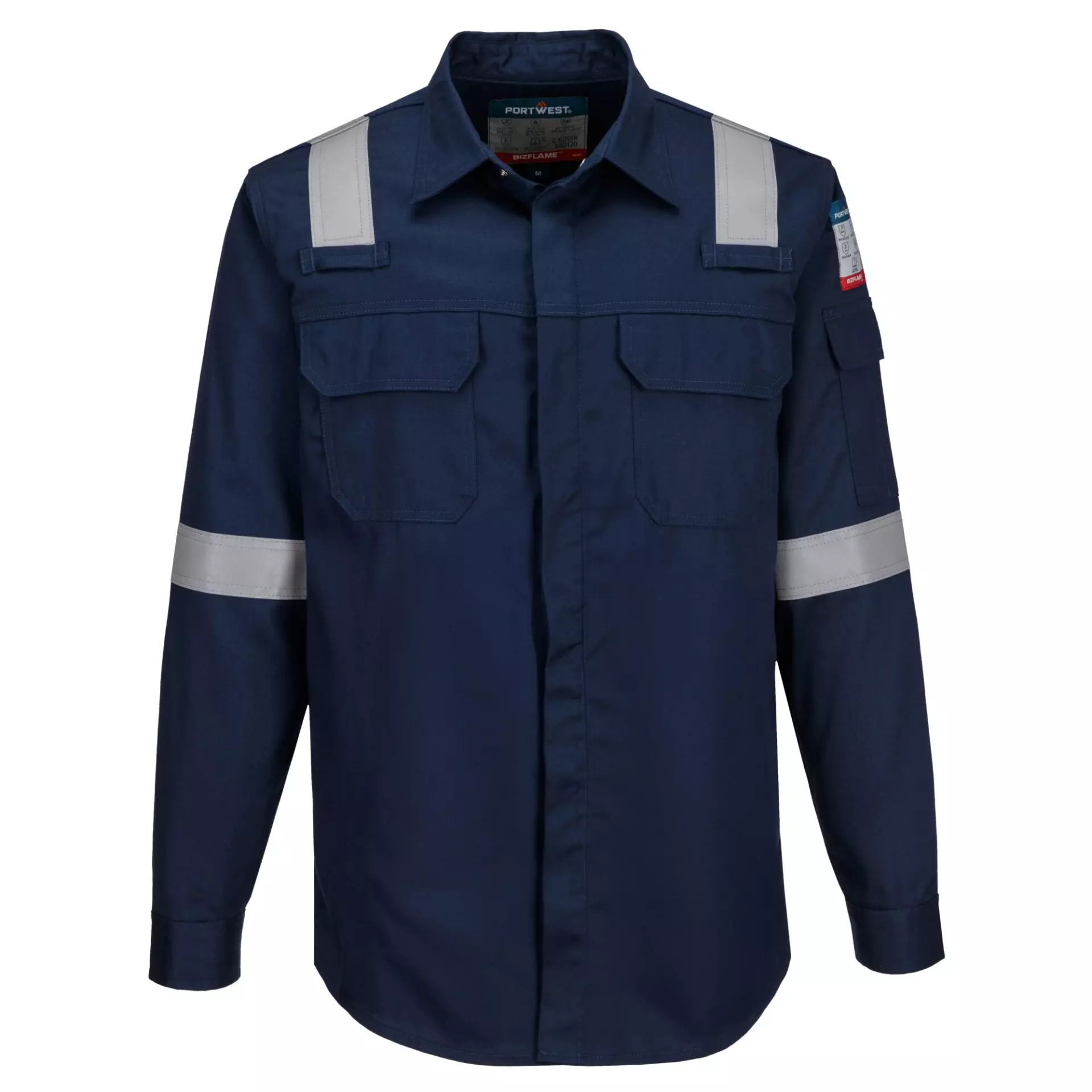
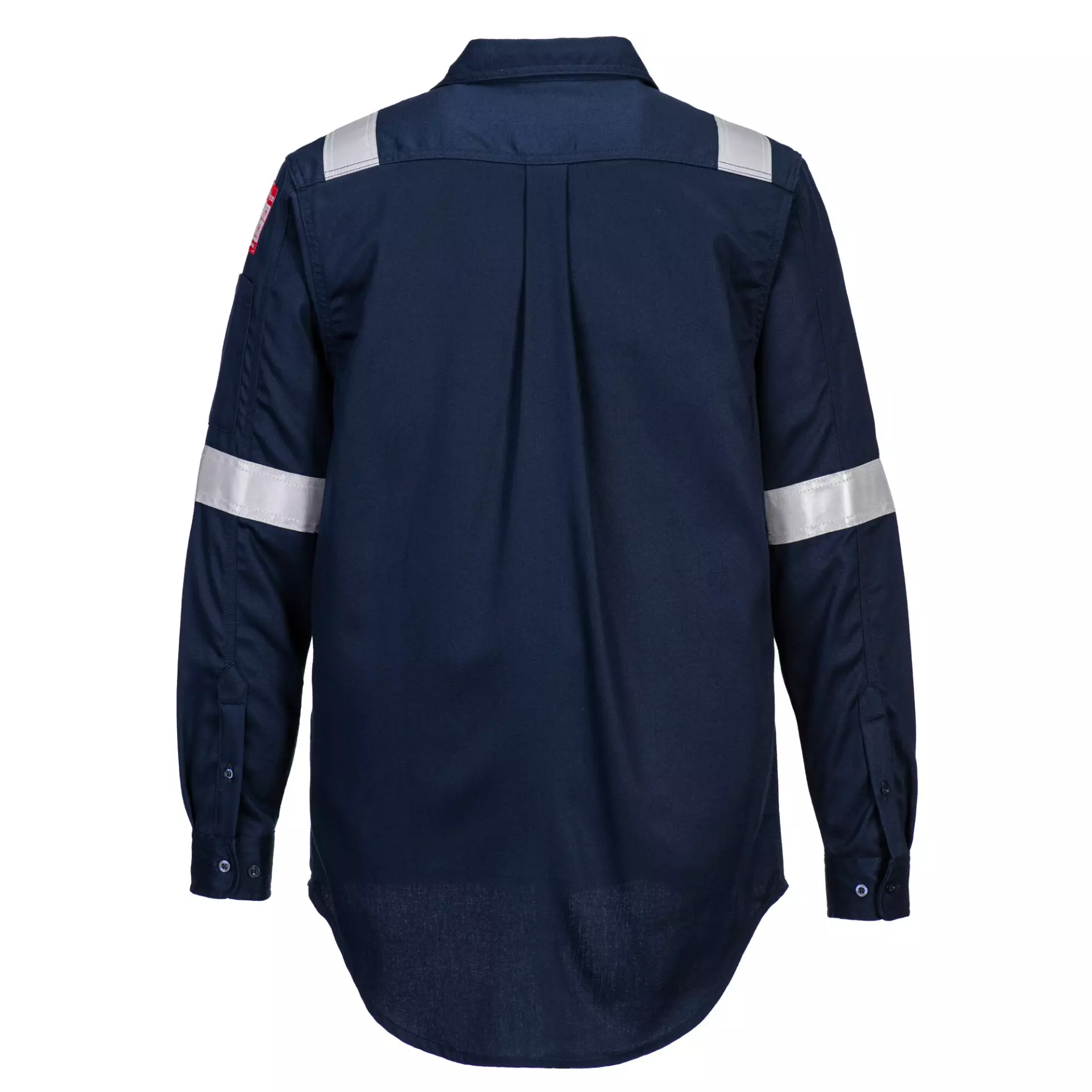
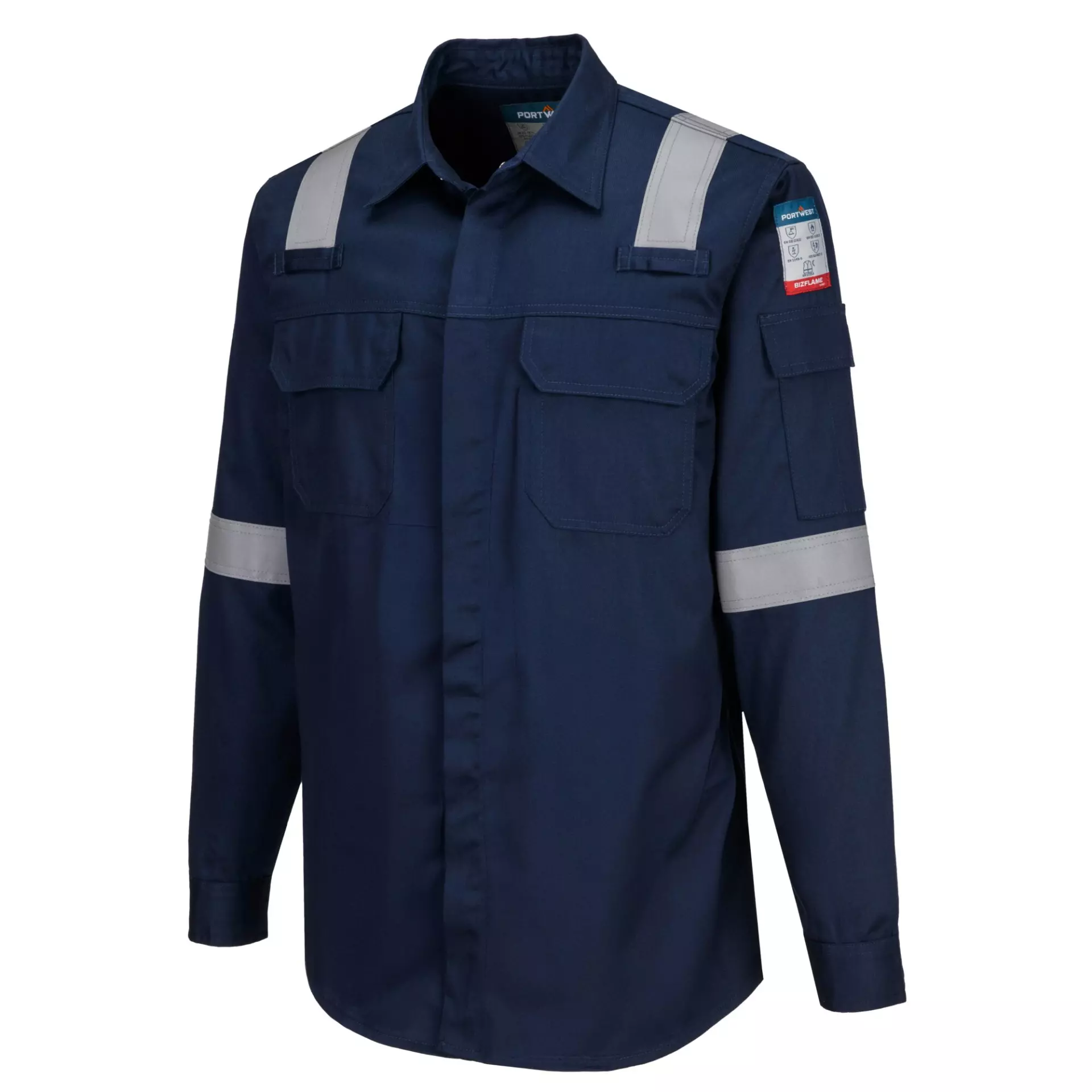
Features You'll Love
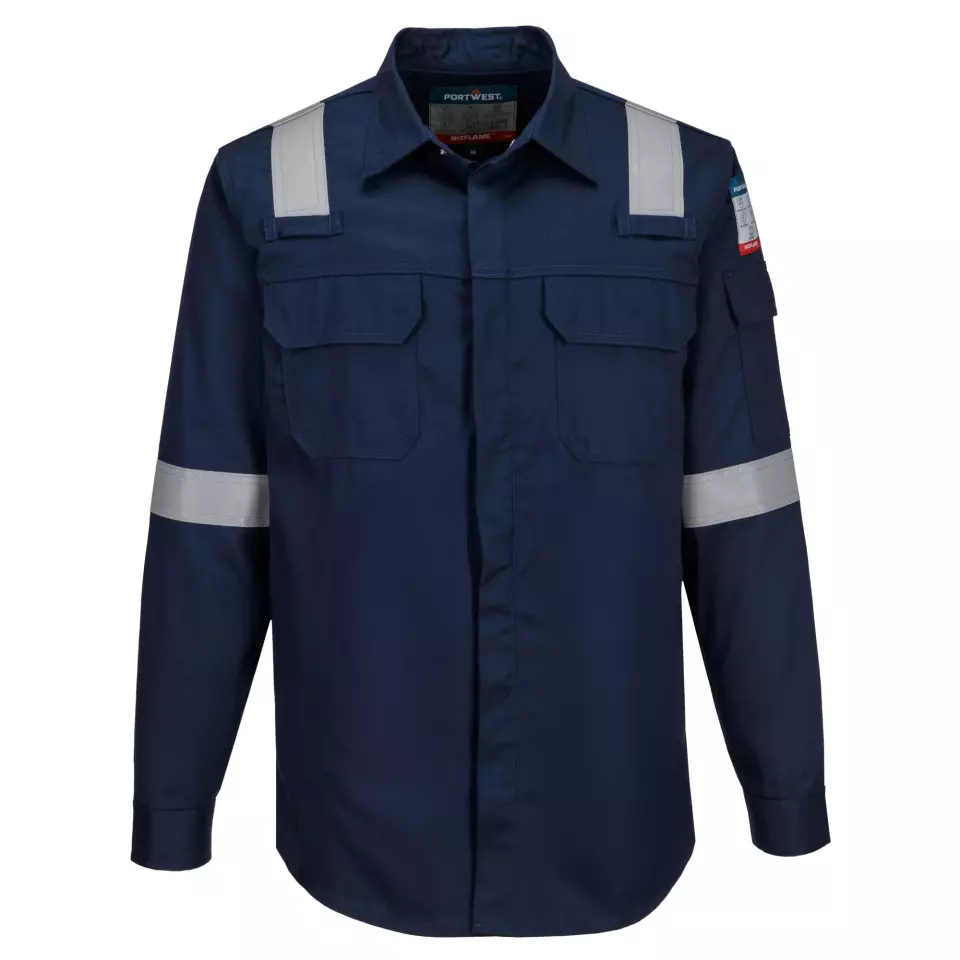
Sleeve Length · Long Sleeve
Determines the length of sleeves, affecting protection from hazards and temperature regulation in different work environments.

Shirt Features · Long Sleeve
Defines the overall design and construction of the work shirt, including sleeve length, collar type, and closure method, affecting comfort and functionality.

Collar Style · Oxford
The design and shape of the neckline, affecting comfort, neck coverage, and how the shirt layers with safety equipment or other work gear.

Cuff Style · Buttoned
Determines how sleeve ends close around the wrist, affecting fit, comfort, and security during work activities.
Portwest
Bizflame Work Lightweight Anti-Static FR Shirt, Navy
Bizflame Work Lightweight Anti-Static FR Shirt, Navy
4.7 / 5
47,73 €
Choose size
Shipping fee is 7,95 € for orders under 80,00 €
Features You'll Love

Sleeve Length · Long Sleeve
Determines the length of sleeves, affecting protection from hazards and temperature regulation in different work environments.

Shirt Features · Long Sleeve
Defines the overall design and construction of the work shirt, including sleeve length, collar type, and closure method, affecting comfort and functionality.

Collar Style · Oxford
The design and shape of the neckline, affecting comfort, neck coverage, and how the shirt layers with safety equipment or other work gear.

Cuff Style · Buttoned
Determines how sleeve ends close around the wrist, affecting fit, comfort, and security during work activities.
Product description
This lightweight flame-resistant work shirt provides comprehensive protection against radiant, convective, and contact heat while maintaining wearer comfort in demanding industrial environments. The garment features high-visibility reflective tape and multiple functional elements including chest pockets, radio loops, and adjustable cuffs for enhanced utility and safety. With 40+ UPF rating blocking 98% of UV rays and certification for ATEX environments, this shirt meets stringent safety standards for electrical and thermal hazard protection.
Product Features:
- Lightweight construction for enhanced wearer comfort
- Premium sew-on flame resistant reflective tape for high visibility
- Two chest pockets with button and flap closure
- Pen division on left pocket
- Radio loops for easy clipping of radio equipment
Technical Details:
- Protection against radiant, convective and contact heat
- 40+ UPF rated fabric blocks 98% of UV rays
- Button front closure with adjustable button cuffs
- 3 pockets for ample storage
- Suitable for ATEX environment applications
Standards:
- CE-CAT III certified (2777/27051-01/E00-00, SATRA Technology Europe Ltd)
- EN ISO 11612 (A1+A2, B1, C1, E2, F1)
- EN ISO 11611 Class 1 (A1+A2)
- EN 1149-5
- IEC 61482-2 IEC 61482-1-1 (ELIM 9 CAL/CM², ATPV 9.7 CAL/CM²)
- EN 17353 Type B2
